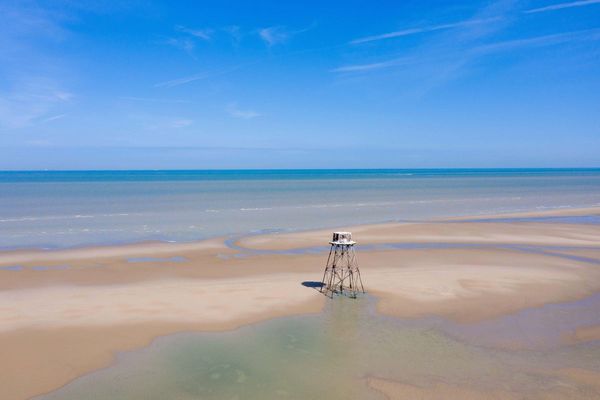There is not a gardener I meet that doesn’t crave plants that are all about blooms, birds and butterflies. Shoot, add bees to it and you would have a surefire award winner. The Dallas Arboretum has one of the superior plant trials in the country, and they gave the award for most Pollinator Friendly Perennial to Rockin' Playin' the Blues salvia.
I really love that award for another reason, that Proven Winners calls it an annual. Well, they are right to a point, but in zones 7b and warmer, in soil that drains well, Rockin' Playin' the Blues has indeed become a stalwart perennial. It is at The Garden Guy’s in zone 8a Georgia and it obviously was in Dallas.
You may be thinking, "That's fine and dandy, but what about treating it as an annual? Is it worth the effort?" It won the Top Performer Award in the prestigious Penn State Trials. So that pretty much sums it up. No matter where you live in the country, Rockin' Playin' the Blues salvia is outstanding and a good buy for your garden dollar.
Looking at the Rockin' series of salvia, gardeners will be quick to notice that Rockin' Playin' the Blues is a totally different species from the others. It is actually the selection of a chance cross, Salvia farinacea x longispicata. This compact cross gives you the best traits of both species. The S. farinacea with DNA from Texas and the S. longispicata native to Western Mexico into elevations from 1,000 to 6,500 feet.
This plant will quickly become the jewel of your cottage garden. Reaching heights of 4 feet with a spread of 3 feet, these spikes or spires of blue will draw attention from your neighbors and flying visitors, too. The tall spires create excitement, reaching above the imaginary horizontal plane of the garden where the round flowers dominate. Add bees, hummingbirds and butterflies and you’ll want to get out the camera.
The ideal site would be full sun, but most of you know I am sun-challenged with high shifting sun. I get good shots of sun from late morning until 3 p.m. The soil should be very well drained. Plant on raised beds or amend heavy soils with the addition of compost or humus. Remember with many plants it is not the cold that takes them out in the winter, but cold coupled with soggy conditions. Well-drained soil may encourage it to return further north than expected.
While preparing the soil, incorporate two pounds of a continuous release plant food per 100 square feet of bed space. Space the plants 18 to 24 inches apart where perennial and a little closer for annual plantings. Set in the ground at the same depth they are growing in the container. Apply a good layer of mulch after planting.
Heat it Up Yellow blanket flower, Luscious Marmalade lantana, Goldsturm rudbeckia, Uptick coreopsis, Color Coded Orange You Awesome echinacea and Blue Fortune agastache, are among The Garden Guy’s companion favorites. Try layering a bed with Rockin' Playin' the Blues salvias in the back, then Truffula Pink Gomphrena midway and Ladybird Lemonade calylophus, which is making its debut this year, in the front. The blue, hot pink and soft yellow will be stunning.
Here is hoping you have a garden for the bees, birds and butterflies this year.
____
(Norman Winter, horticulturist, garden speaker and author of “Tough-as-Nails Flowers for the South” and “Captivating Combinations: Color and Style in the Garden.” Follow him on Facebook @NormanWinterTheGardenGuy.)
(NOTE TO EDITORS: Norman Winter receives complimentary plants to review from the companies he covers.)







